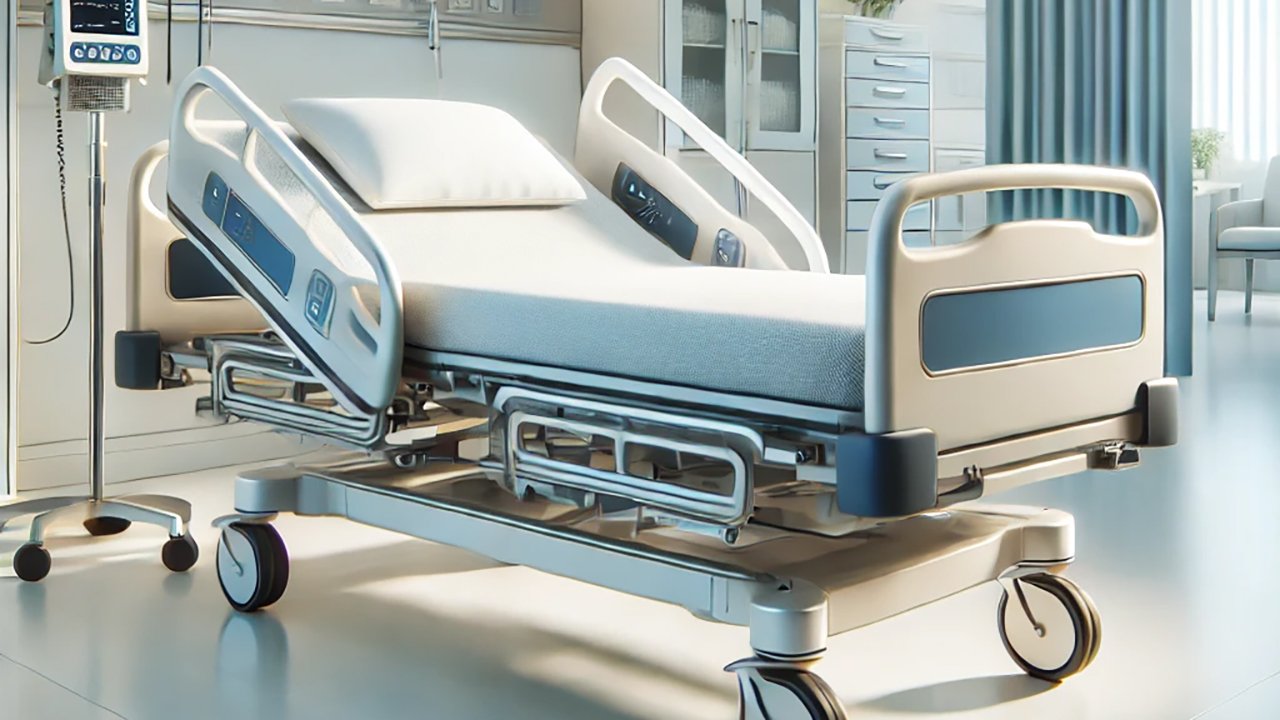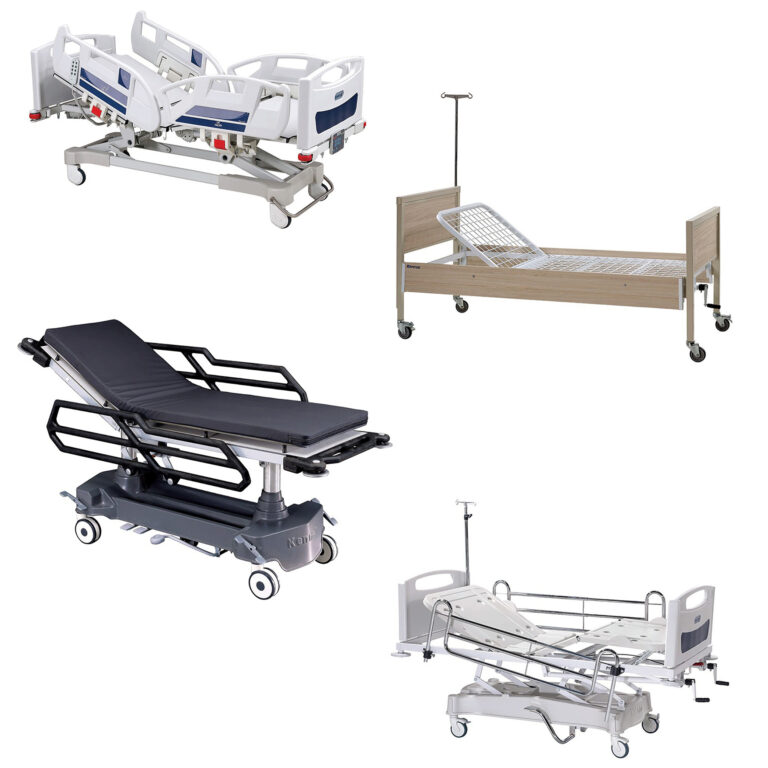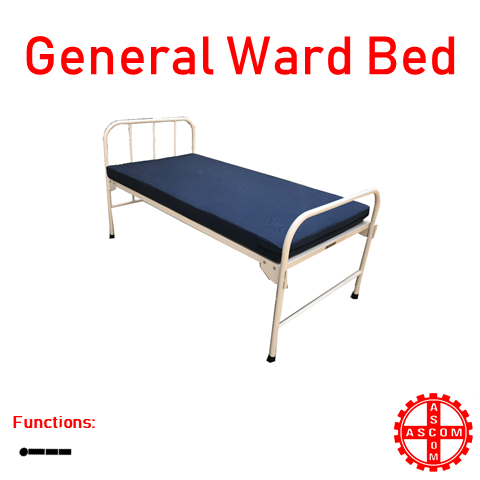What Does Hospital Beds For Home Use Mean?
Table of ContentsHospital Beds For Home Use Fundamentals ExplainedFascination About Hospital Beds For Home UseHospital Beds For Home Use Things To Know Before You BuyAn Unbiased View of Hospital Beds For Home UseHospital Beds For Home Use Fundamentals ExplainedUnknown Facts About Hospital Beds For Home UseAll about Hospital Beds For Home Use
There are three main types of health center beds: manual, semi-electric, and fully-electric. These beds utilize hand cranks to adjust the bed's height and raise and reduce the head and the foot.
Semi-electric beds have an electrical motor to elevate and decrease the head and foot sections of the bed. People and caregivers adjust the positioning by pushing switches using a hand necklace. The elevation of the bed is readjusted by hand with a hand crank. Full-electric beds have an electrical motor that can elevate the head and foot areas of the bed in addition to the entire elevation and positioning of the bed.
Little Known Facts About Hospital Beds For Home Use.
Some versions can also relocate right into even more placements, such as the Trendelenburg (tilt) position. There are several kinds of hospital beds, each designed to satisfy details person needs. Here are some common kinds: This is one of the most typical sort of hospital bed, developed for general medical use. It has a handbook or electrically flexible headrest, foot rest, and elevation.
Lower to the ground than a standard bed. This kind of bed is made for bigger individuals, with a bigger structure and higher weight capability than a basic bed.
This kind of bed is created for critically sick patients that need open surveillance and specialized medical devices such as ventilators and infusion pumps. This sort of bed is designed for usage during labor and distribution, with adjustable settings and attributes to sustain the mom and infant during the birth procedure.
Little Known Questions About Hospital Beds For Home Use.
Numerous feature and the devices carry out expanding traction to different components of the vertebra and the extremities without relocating the body. These are simply a few examples of the sorts of hospital beds available. The specific sort of bed utilized will rely on the patient's problem, medical demands, and various other aspects.
Here is things you need to know. A one-function health center bed is a medical bed that enables an individual to relocate just the head or foot section up or down. A 2 feature hospital bed generally refers to a kind of medical bed that has 2 adjustable features to help people in healthcare facilities or treatment facilities.

An Unbiased View of Hospital Beds For Home Use
A 7-function ICU bed is a kind of clinical bed that provides several flexible features to sustain seriously unwell patients in an intensive care system (ICU) (hospital beds for home use). The 7 features commonly consist of: Backrest adjustment: The backrest can be adapted to various angles to help the client sit up or lie down comfortably
Height adjustment: The bed can be elevated or decreased to make it less complicated for patients to obtain in and out of bed, and for caretakers to give care. Trendelenburg setting: The entire bed can be tilted to promote blood circulation and circulation in the body. Click Here Reverse Trendelenburg placement: The bed can also be slanted in the opposite direction to advertise blood flow and flow in the upper body.
1. What Dimension is a Medical Facility Bed? 2. Just how much Does a Hospital Bed Cost? 3. Why Do Medical Facility Beds Have Side Rails? 4. What Are The Main Health Center Bed Components?. While more cost effective than electrical models, these beds call for physical initiative for adjustments. The main benefits of hand-operated beds are their cost and reliability, as they don't count on electrical power. Nevertheless, the requirement for hand-operated initiative can be a limitation in scenarios where fast changes are needed or where caregivers deal with physical difficulties.
What Does Hospital Beds For Home Use Mean?
Semi-electric medical facility beds provide a balance of manual and electrical controls. These beds supply an ideal center ground between handbook and fully electrical alternatives, offering convenience of use moved here without the full cost of electric models.
Semi-electric beds are well-suited for people that need moderate modifications to the head and foot areas but can manage without constant elevation modifications. This makes them an economical option for those looking for convenience and comfort without the demand for consistent repositioning. Totally electric hospital beds feature electrical controls for smooth modifications to the elevation, head, and foot areas.
Specialty health center beds, such as ICU beds, long-term treatment beds, and bariatric beds, are carefully made to resolve specific medical demands. These beds use tailored treatment for diverse individual teams, improving both end results and comfort. In the complying with sections, we will discover the major sorts of specialty medical facility beds, outlining their particular advantages and applications.
With years of experience in producing electric straight actuators - hospital beds for home use and close cooperation with the health care industry, TiMOTION is well-positioned to offer trustworthy medical care remedies. Our up and down incorporated business handles every action of the production process, from style to actuator setting up, guaranteeing we deliver exceptional worth and customized solutions tailored to your particular demands
About Hospital Beds For Home Use

To find out even more about incorporating these technologies into your products, call us today. Further analysis:.
Information is sourced from the Medicare Cost Report.

Some Known Factual Statements About Hospital Beds For Home Use
A health center bed is a bed designed specifically for clinical objectives. It is not just a place for patients to relax, yet likewise a platform for clinical procedures. Unlike normal home beds, health center beds normally have flexible features, which can facilitate clinical team to make various modifications according to the needs of patients, such as transforming the height, disposition, and assistance angle of the back and legs of the bed.